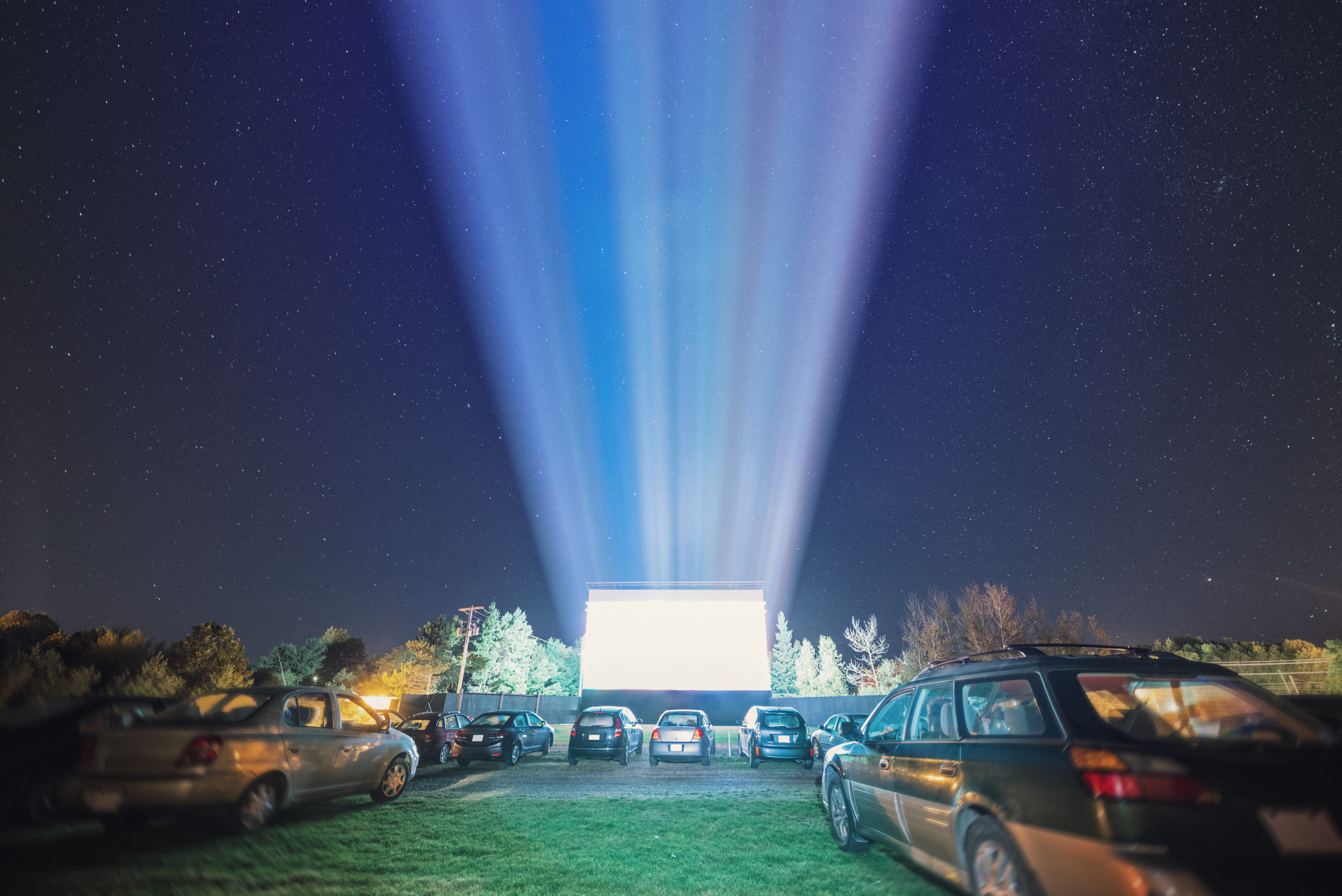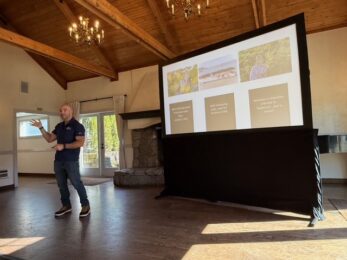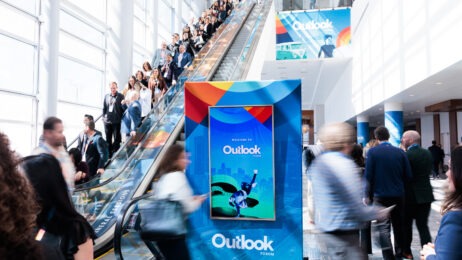Valerie Bihet of VIBE Agency wants planners to go back to the future to safely start bringing people together for product launches, sales kick-offs and corporate social events. She also has insights about why you should shape the future of virtual events according to a familiar but underutilized blueprint—broadcast television.
Her in-person “innovation” is a throwback in time: the classic drive-in theater. It’s an opportunity that has already been percolating in the ozone. BizBash reported that 15/40 Productions and CH Cre8tive, a pair of event companies in Southern California, are planning to rent drive-in theaters for entertainment premieres. And the NFL’s Miami Dolphins announced last week that it would turn its empty playing field into a drive-in theater that can accommodate up to 230 cars for events such as concerts, graduations—and, of course, movies.
Bihet noted VIBE has already done drive-in events for corporate incentives. One involved renting cars for a team of more than 100 who went on a road trip, then stopped in the evening at a meeting point for a viewing party complete with a DJ and dancing. She thought about the wider applications when her fifth-grade daughter was disappointed about missing her middle school graduation. Why couldn’t the graduation be held at a drive in, with each child getting on stage as they would have, while respecting social distancing measures? She started pitching the idea to school superintendents—and to some of her clients.
Customized drive-in events offer the built-in benefit of physical distancing through cars. They also provide a bevy of exciting possibilities for branding and social engagement through technology within the event, Bihet thinks.
With event goers tuning in to a low-wattage FM radio channel, a stage set up for panel discussions or speakers, and the use of social media (think prepanel TikTok challenges to break the ice and interactive app features), the atmosphere could provide the energy missing without face-to-face, while adhering to necessary safety precautions. Bihet notes the possibilities aren’t relegated to current drive-in structures, either—a huge parking lot or a sports stadium could easily be converted into such an arena, a la the Miami Dolphins.
Rev Your Engines
She says timing is an important factor in moving forward with such a plan. Lockdown restrictions vary from state to state and county to county, and some locations may not presently allow a drive-in gathering. From planners to clients, everyone is still in the awkward position of being without a timeline. “This could work for events that were meant to happen in September and October”, she said.
She cited a kind of Maslow’s Hierarchy of Needs for her client companies affected by the virus.
“First we were all in a crisis phase—what do we have to do urgently for the next couple weeks? Then it was survival—what do we have to do to survive for the next six months? When we have figured that out, it’s about the new challenges due to the changed environment beyond that, and how we will rebound,” she says. “I’m checking with my clients to find out what phase they’re in first. If they’re still in survival mode, it’s obviously not the right time to plan an event. But I’m seeing some movement now. The mood is that we will have to get back to work at some point, and we are getting ready.”
Bihet urged that this was the time to think outside of the box. Meetings depend of marketing budgets. What companies can you work with which are not as heavily impacted by the pandemic, or were even strengthened by increased need for their services? Some food and tech companies have boomed due to ramping up their offerings and services. See where new collaborations can take place, she advises.
Lights, Camera, Action
Live events are still on hold for the near future; they’ll need modification and careful planning to accommodate social distancing when they are allowed. This means virtual events are still very much needed. Bihet had much to share on this point, too, and cinematic themes are still at play.
“My philosophy on virtual events and meetings is to think of them like broadcast television. There needs to be a narrative. Visual storytelling and seamless pacing are crucial,” she says.
Why is it that we are overtired by a few hours of Zoom calls and Google hangouts, yet we can watch TV for hours on end? The set, sound and lighting and a scripted narrative bring us visual and mental variety, Bihet notes. All these elements are designed to keep our attention. Contrast that with, for example, Bihet’s virtual nightmare: ““When you see webinars with one slide and half a speaker in the corner, and they stay like that for one hour—come on, we’re event planners!”
As virtual events continue, thinking about planning them with the same attention to detail as a live event will bring higher engagement and richness to the platform. Depending on the event, she says, think about guests, changing camera angles, and scripting the whole process out. To stoke engagement, the liveliness, use of the element of surprise and the overall careful planning of a televised event should be the new future of remote gatherings.
Bihet pinpointed another area the industry must to work on. “There needs to be clarification about virtual event language. Everything is a virtual event, and it’s confusing for the client. A webinar, Zoom meeting and remote event are all called virtual events.”
See You at the Movies
In lieu of Bihet’s recommendations about approaching virtual events from a broadcast mindset, our homework becomes clear: Maybe all those quarantine hours on Netflix and Hulu are research, after all.




